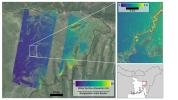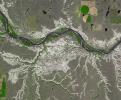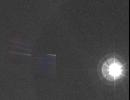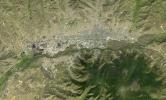
A reading from th the Song of Songs SGS 3:1-4B
The Bride says: On my bed at night I sought him whom my heart loves– I sought…

A reading from th the Song of Songs SGS 3:1-4B
The Bride says: On my bed at night I sought him whom my heart loves– I sought…

A reading from the Book of the Prophet Isaiah IS 1:10-17
Hear the word of the LORD, princes of Sodom! Listen to the instruction of our God,…

A reading from the Book of Amos AM 3:1-8; 4:11-12
Hear this word, O children of Israel, that the Lord pronounces over you, over the whole family…

What’s happened since the universe started?
The time spiral shown here features a few
notable highlights

We celebrate two great saints today, Saints Peter and Paul. Saint Peter is often considered the Apostle to the Jews and Saint Paul to the Gentiles (based, most probably, on his extensive travels among the Gentiles). Together they witnessed to the budding of Christianity, and both laid down their lives for the faith.
Read More

Named RCW 7, the nebula is located just over 5300 light-years from Earth in the constellation Puppis. Nebulae are areas of space that are rich in the raw material needed to form new stars. Under the influence of gravity, parts of these molecular clouds collapse until they coalesce into protostars, surrounded by spinning discs of leftover gas and dust. In the case of RCW 7, the protostars forming here are particularly massive, giving off strongly ionising radiation and fierce stellar winds that have transformed it into what is known as a H II region. The ultraviolet radiation from the massive protostars excites the hydrogen, causing it to emit light and giving this nebula its soft pinkish glow. Here Hubble is studying a particular massive protostellar binary named IRAS 07299-1651, still in its glowing cocoon of gas in the curling clouds towards the top of the nebula. To expose this star and its siblings, this image was captured using the Wide Field Camera 3 in near-infrared light. The massive protostars here are brightest in ultraviolet light, but they emit plenty of infrared light which can pass through much of the gas and dust around them and be seen by Hubble.
Read More
This post spotlights born-digital, georeferenced map series from the MapServer Ethiopia project, which provides modern mapping of Ethiopia at five different scales, across multiple themes.
Read More

A reading from the Second Book of Kings 2 KGS 19:9B-11, 14-21, 31-35A, 36
Sennacherib, king of Assyria, sent envoys to Hezekiah with this message: “Thus shall…

You govern your creation, O God,
and bring it to perfection by the work of our hands.
Hear the prayers of your people who ask for work
that will enhance their human dignity
and promote the upbuilding of your kingdom.
Enable them to provide for those confided to their care
either by family ties or by charity we owe to one another
for the betterment of human life.
We ask this blessing in the name of Jesus
who laboured with his own hands while he lived on earth.
Amen.
Read More

This NASA/ESA Hubble Space Telescope image features the globular cluster NGC 2005. It’s not an unusual globular cluster in and of itself, but it is a peculiarity when compared to its surroundings. NGC 2005 is located about 750 light-years from the heart of the Large Magellanic Cloud (LMC), which is the Milky Way’s largest satellite galaxy some 162,000 light-years from Earth.
Read More
An insight into early 18th century trade in the East-Indies focusing on the English East Indies Company and the 1721-1723 trade voyage of the ship Townsend revealed through the maps of British cartographer Herman Moll.
Read More
A reading from the Acts of the Apostles ACTS 11:21B-26; 13:1-3
In those days a great number who believed turned to the Lord. The news about them…


The rising Earth is about five degrees above the lunar horizon in this telephoto view taken from the Apollo 8 spacecraft near 110 degrees east longitude. Astronaut Bill Anders took the photo on the morning of Dec. 24, 1968. The South Pole is in the white area near the left end of the terminator. North and South America are under the clouds.
Read More
First reading from the book of the Prophet Hosea Hos 11:1, 3-4, 8c-9
Thus says the LORD: When Israel was a child I loved him, out of…

Why does
Comet Pons-Brooks
now have tails pointing in opposite directions?
The most
spectacular tail is the blue-glowing
ion tail that is visible flowing down the image



Excellent view of the docked Apollo 9 command and service modules (CSM) and lunar module (LM), with Earth in the background, during astronaut David R. Scott’s stand-up spacewalk, on the fourth day of the Apollo 9 Earth-orbital mission. Scott, command module pilot, is standing in the open hatch of the command module. Astronaut Russell L. Schweickart, lunar module pilot, took this photograph of Scott from the porch of the LM. Inside the LM was astronaut James A. McDivitt, Apollo 9 commander.
Read More
First reading from the Book of Deuteronomy Dt 4:32-34, 39-40
Moses said to the people: “Ask now of the days of old, before your time, ever since…


Orbiting 400 kilometers above Quebec, Canada, planet Earth, the
International Space Station
Expedition 59 crew captured
this snapshot of the broad
St

The evolutionary model is not clear about when flowering plants arrived on earth. Evolutionists remain unsure when the angiosperms emerged.
Read More


In this artistic rendering, a slice of the 3D map of galaxies collected in the first year of the Dark Energy Spectroscopic Instrument (DESI) Survey appears in a rainbow of color above the NSF Nicholas U. Mayall 4-meter Telescope, on which DESI is mounted. Earth is at the tip of the map, with the …
This is an NSF Multimedia Gallery item.
Read More


Immediately after splashdown, a recovery helicopter from the USS Guadalcanal hovers over the Apollo 9 spacecraft. Still inside the Command Module are astronauts James A. McDivitt, David R. Scott, and Russell L. Schweickart. Splashdown occurred at 12:00:53 p.m. EST March 13, 1969, only 4.5 nautical miles from the USS Guadalcanal, the prime recovery ship, to conclude a successful 10-day Earth-orbital mission in space.
Read More
Take this simulated plunge
and dive into the upper atmosphere of Jupiter, the
Solar System’s ruling gas giant

Graceful star trail arcs
reflect planet Earth’s daily rotation in this
colorful night skyscape

This
well-composed composite panoramic view
looks due south
from Banks Peninsula near Christchurch on New Zealand’s South Island

A familiar sight from Georgia, USA, the
Moon sets near the western horizon in this rural night skyscape

What did the monster active region that created the recent auroras look like when at the Sun’s edge?
There, AR 3664 better showed its 3D structure
Read More

|
Target: Earth Mission: SWOT Instrument: KaRIn Image Credit: NASA/JPL-Caltech/UNC-Chapel Hill/Google Earth |

For the mostly harmless denizens of planet Earth, the
brighter stars of open cluster
NGC 2169
seem to form a cosmic
37


First reading from the Acts of the Apostles Acts 1:1-11
In the first book, Theophilus, I dealt with all that Jesus did and taught until the day…

Our Father, Who art in Heaven, hallowed be Thy name; Thy Kingdom come, Thy will be done on earth as it is in Heaven. Give us this day our daily bread; and forgive us our trespasses as we forgive those who trespass against us; and lead us not into temptation, but deliver us from evil. Amen.
Read More
Bright elliptical galaxy Messier 87 (M87)
is home to the
supermassive black hole captured in 2017 by planet Earth’s
Event Horizon Telescope
in the first ever image of a black hole

A reading from the Acts of the Apostles Acts 17:15, 22—18:1
After Paul’s escorts had taken him to Athens, they came away with instructions for Silas and…

What happens when a black hole devours a star?
Many details remain unknown, but observations are providing new clues
Read More
O heavenly Father, Almighty God, we humbly beseech Thee to bless and sanctify this house and all who dwell therein and everything else in it, and do Thou vouchsafe to fill it with all good things; grant to them, O Lord, the abundance of heavenly blessings and from the richness of the earth every substance necessary for life, and finally direct their desires to the fruits of Thy mercy. At our entrance, therefore, deign to bless and sanctify this house as Thou didst deign to bless the house of …
Read More

|
Target: Earth Mission: Terra Instrument: ASTER Image Credit: NASA/METI/AIST/Japan Space Systems, and U.S./Japan ASTER Science Team |

A mere 280 light-years from Earth,
tidally locked, Jupiter-sized exoplanet WASP-43b
orbits its parent star once every 0


|
Target: Sol (our sun) Mission: Instrument: Image Credit: NASA/JPL |

Majestic on a truly cosmic scale, M100 is appropriately known as a
grand design spiral galaxy


This NASA/ESA Hubble Space Telescope image shows LEDA 42160, a galaxy about 52 million light-years from Earth in the constellation Virgo. The dwarf galaxy is one of many forcing its way through the comparatively dense gas in the massive Virgo cluster of galaxies. The pressure exerted by this intergalactic gas, known as ram pressure, has dramatic effects on star formation in LEDA 42160.
Read More

|
Target: Earth Mission: Terra Instrument: ASTER Image Credit: NASA/METI/AIST/Japan Space Systems, and U.S./Japan ASTER Science Team |
